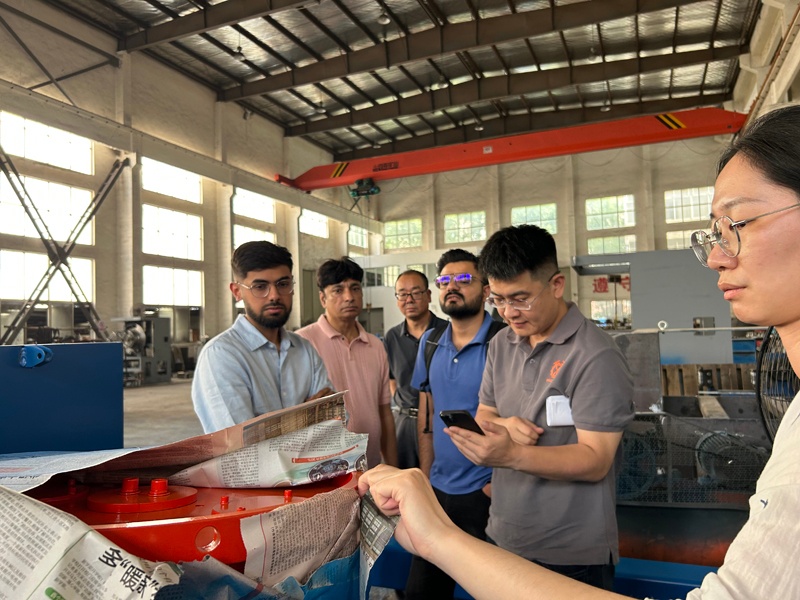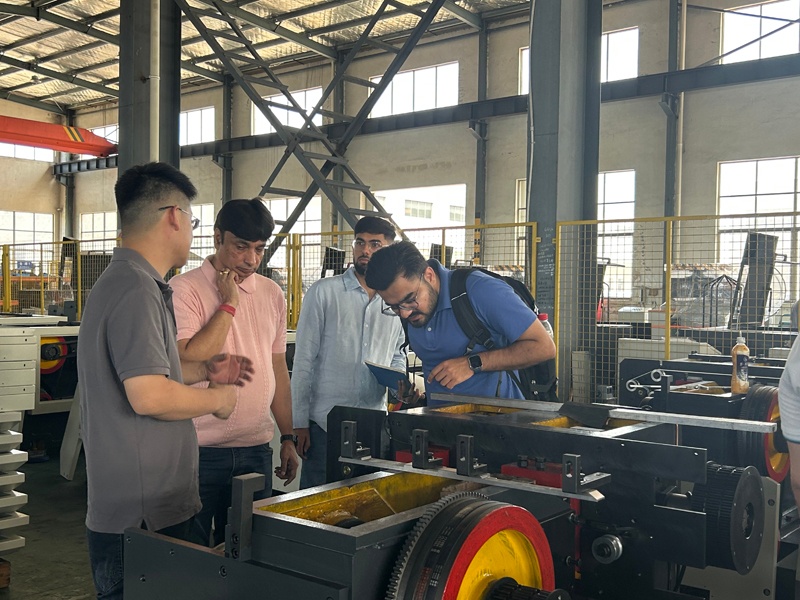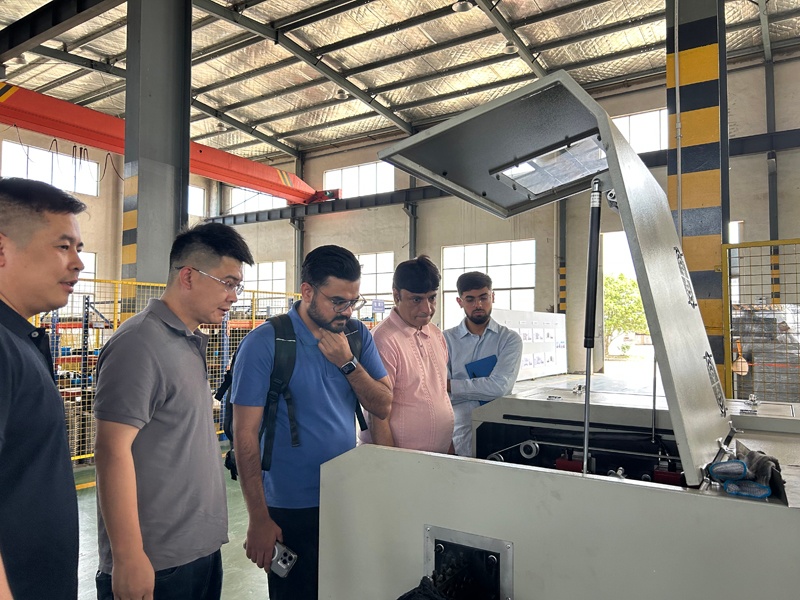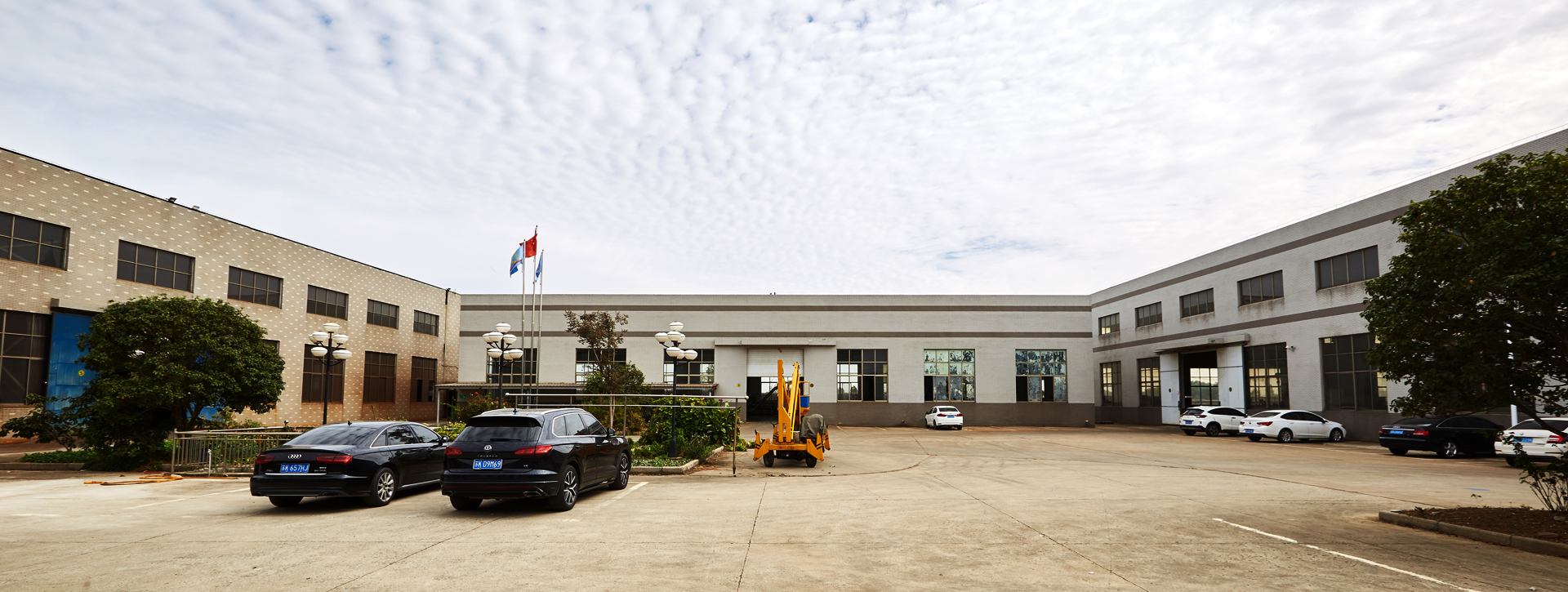Wire Nail Machine: The Automated Powerhouse Revolutionizing Fastener Production
Discover how wire nail machines transform coils into millions of nails daily. Learn about cold heading technology, machine types, benefits, applications, and critical buying factors for manufacturers. Boost your production efficiency today!
The Wire Nail Machine: Engine of the Modern Fastener World
In the bustling heart of construction sites, furniture factories, and countless manufacturing plants worldwide, billions of nails perform the critical, often unseen, task of holding materials together. The sheer volume and consistency demanded by modern industry would be impossible without the remarkable efficiency of the wire nail machine . This specialized piece of industrial machinery is the cornerstone of fastener production, transforming simple coils of wire into perfectly formed nails at breathtaking speeds. Understanding its operation, capabilities, and selection criteria is essential for anyone involved in manufacturing or sourcing nails.

The Core Technology: Cold Heading Precision
At the heart of every modern wire nail machine lies cold heading technology , a sophisticated form of cold forging. This process shapes metal wire at or near room temperature using immense pressure within precision-engineered dies, eliminating the need for less efficient and energy-intensive hot forging methods.
Here's a detailed look at the nail-making journey inside a typical automatic wire nail machine :
Wire Coil Loading & Handling: The process begins with a large coil of wire, commonly mild steel, but also options like stainless steel, copper, aluminum, or galvanized wire. Robust coil handling systems ensure smooth unwinding.
Wire Straightening: Essential for precision. The coiled wire naturally has curvature. It passes through a series of precisely calibrated rollers that meticulously remove any bends or kinks, ensuring perfectly straight wire feeds into the forming section. Consistent straightness is non-negotiable.
Gripping & Feeding: Advanced gripping mechanisms clamp the straightened wire. A servo-driven or mechanical feeder pushes a meticulously measured length of wire (determining the nail's shank length) into the forming station. Speed and accuracy here are phenomenal.
Cut-Off: At the precise moment the correct length is fed, hardened steel cutting dies close, shearing the wire to its final shank length. This cut initiates the point formation.
Head Forming (Upsetting): Simultaneously or immediately after the cut, the advanced end of the wire is clamped. A powerful punch, driven by the machine's crankshaft or toggle mechanism, delivers tremendous force, slamming the wire end against a stationary heading die . The metal flows plastically under this pressure, filling the die cavity to create the nail head – whether round, flat, countersunk, clipped (roofing), or another specialized profile. Multi-station machines might use preliminary heading dies before a final form.
Pointing: Primarily achieved during the cut-off stage. The geometry of the cutting dies is designed not just to sever the wire but also to shear and form the material into a sharp point (e.g., diamond, chisel, blunt, needle). Additional pointing tools or dies might refine the point in complex machines.
Shank Deformation (Optional): For nails requiring enhanced holding power (e.g., ring shank concrete nails, screw shank wood nails), specialized rolling dies or other forming mechanisms impress annular rings or spirals onto the shank immediately after heading/pointing.
Ejection: The finished nail is forcibly ejected from the dies, typically using compressed air jets or mechanical kickers, and directed onto a conveyor or into a collection bin. The cycle instantly repeats.
Secondary Operations (Often Integrated): Modern wire nail production lines frequently include downstream processes:
Polishing/Vibratory Tumbling: Removes minor burrs and creates a smooth, uniform surface finish.
Coating: Electro-galvanizing, hot-dip galvanizing, or other coatings applied for corrosion resistance. May require separate equipment.
Automatic Sorting & Packaging: Systems count, weigh, and box nails for shipment, often directly integrated with the machine's output.

Anatomy of a Wire Nail Machine: Precision Components
Heavy-Duty Frame & Drive: A robust, vibration-resistant frame (often cast iron) forms the foundation, absorbing massive forming forces. The drive system (electric motor, flywheel, crankshaft, connecting rods/toggles, gearbox) converts rotational energy into the powerful linear force needed for cold heading.
Wire Preparation Unit: Includes coil payoff stands, guides, and multi-roller straightening mechanisms critical for feeding flawlessly straight wire.
Precision Feeding Mechanism: Servo motors or mechanical cams ensure exact wire length is advanced consistently for each nail. The heart of dimensional accuracy.
Cut-Off & Gripping Assembly: Hardened tool steel components that precisely cut the wire and firmly hold it during the critical forming stages.
Heading Punches & Dies: The core forming tools. Made from ultra-hard, wear-resistant tool steels (like tungsten carbide inserts), these custom-machined components define the nail head's shape under extreme tonnage. Multiple sets allow for different head styles.
Cutting/Pointing Dies: Similarly hardened tooling designed to simultaneously cut the nail and form the point geometry through careful die design and shearing action.
Shank Rolling Unit (If Applicable): Dedicated stations with hardened rollers to imprint rings or spirals onto the nail shank.
Ejection System: Ensures reliable removal of the finished nail to maintain continuous high-speed operation. Air nozzles are common.
Advanced Control System (PLC + HMI): The machine's brain. A Programmable Logic Controller (PLC) manages the entire sequence – speed, feed length, punch timing, lubrication cycles, and safety interlocks. A Human-Machine Interface (HMI) touchscreen allows operators to set parameters, monitor production counts, detect faults, and changeover for different nail sizes.
Lubrication System: Vital for reducing friction, cooling tools, and preventing premature wear. Can be mist, flood, or drip systems, often with filtration.

Types of Wire Nail Machines: Matching Output to Need
The wire nail machine market offers options tailored to nail type and production volume:
Automatic Wire Nail Machines (The Standard): Fully integrated systems performing feed, cut, head, point, and eject in one continuous cycle. Sub-categorized by forming complexity:
Station 1: Cut-off & Pointing
Station 2: Pre-heading (initial head form)
Station 3: Final Heading
Station 4: Shank Rolling (if needed)
Station 5: Ejection/Smoothing Enables production of highly complex nails (e.g., large specialty heads, deep ring shanks) at the highest speeds (often 300-600+ nails per minute) with optimal material grain structure and strength. Essential for high-volume production of roofing nails, coil nails, and deformed shank nails.
Single-Station/Single-Die Machines: Perform heading and pointing essentially in one action. Efficient for basic round wire nails (common nails) at lower to medium volumes. Often a cost-effective entry point.
Double-Station/Double-Die Machines: Feature two distinct forming stations. Station 1: Pre-heading or Heading. Station 2: Final Heading and/or Pointing/Finishing. Offers greater flexibility for more complex head shapes (large flat heads, clipped heads) or specific points than single-station machines. Good balance of versatility and speed.
Multi-Station/Progressive Header Machines (High-End): The pinnacle of wire nail machine technology. Wire moves progressively through 3, 4, or 5 stations. Each station performs a specific operation:
Specialized Wire Nail Machines:
Coil Nail Machines: Integrate nail forming with collation. As nails are produced, they are automatically collated into coils (using wire or plastic) for use in pneumatic coil nail guns. Essential for roofing and fencing applications.
Roofing Nail Machines: Typically high-speed multi-station machines optimized for producing large-headed, ring-shanked or screw-shanked nails, frequently with integrated coil collation. Built for durability under high load.
Brad Nail & Finish Nail Machines: Designed for very small diameter nails (e.g., 18-23 gauge) with small heads or headless designs. Require extreme precision at high speeds.
Duplex Head Nail Machines: Produce double-headed nails specifically for easy removal from concrete formwork.

Why Invest in a Wire Nail Machine? The Compelling Advantages
The economic and operational benefits drive widespread adoption:
Massive Production Speed & Capacity: The defining advantage. Modern machines produce hundreds to well over a thousand nails per minute . A single machine can replace the output of dozens or hundreds of manual workers, enabling factories to meet massive global demands efficiently.
Significant Cost Reduction: Dramatically lowers the cost per nail through:
Minimal Labor: High automation drastically reduces direct labor costs.
Reduced Material Waste: Cold heading is highly material-efficient (>95% yield is common), minimizing scrap compared to machining.
Energy Efficiency: Cold forming generally uses less energy than hot forging or extensive machining.
Unmatched Consistency & Quality: Machines eliminate human error and fatigue. Every nail in a batch conforms precisely to dimensional tolerances (length, head diameter, point angle, shank features) and exhibits consistent mechanical properties. Critical for automated assembly and structural reliability. Meets standards like ASTM F1667 effortlessly.
Enhanced Material Properties: Cold heading work-hardens the metal, particularly in the head and point areas, increasing strength and hardness where it's needed most compared to the original wire.
Improved Workplace Safety: Automates hazardous tasks involving high-force cutting and forming, significantly reducing the risk of operator injuries associated with older methods.
Operational Flexibility: Modern PLC-controlled machines allow relatively quick changeovers (die and tool changes) to switch between different nail sizes and types within the machine's design capacity, supporting diverse product lines.
Scalability: Production can be easily scaled by adding multiple wire nail machines to a production line.

Beyond the Obvious: Diverse Applications of Wire Nails
While construction dominates (framing, roofing, siding, concrete forming, fencing), wire nail machine products are ubiquitous:
Furniture & Woodworking: Assembly (common nails), upholstery, trim work (finish nails, brads), cabinetry.
Packaging & Logistics: Building wooden crates, boxes, pallets, and skids.
Manufacturing: Securing components in appliances, automotive interiors (trim), HVAC ducting, insulation.
DIY & Retail: The vast array of nails sold in hardware stores for consumer projects.
Agriculture: Fencing, barn construction, equipment repair.
Specialty Industries: Marine applications (special coated nails), electrical box securing, crafts.
Selecting the Right Wire Nail Machine: Critical Considerations
Choosing wisely is paramount for profitability and success. Evaluate these factors thoroughly:
Target Nail Specifications:
Nail Type (Common, Finishing, Roofing, Coil, Brad, Duplex, etc.)
Shank Diameter / Wire Gauge (Range required: e.g., 1.0mm to 4.5mm / 18ga to 6D)
Shank Length (Range required: e.g., 10mm to 150mm / 3/8" to 6")
Head Type & Size (Round, Flat, Clipped, Countersunk; Diameter)
Point Type (Diamond, Chisel, Blunt, Needle)
Shank Feature (Smooth, Ring Shank, Spiral Shank)
Material (Mild Steel, Galvanized, Stainless, Copper, Aluminum)
Required Production Volume: Calculate target daily/weekly/monthly output (e.g., kgs or pieces). Choose a machine that meets peak demand comfortably. High speed wire nail machines (especially multi-station) are essential for large volumes.
Wire Capacity: The maximum wire diameter (gauge) the machine can process. Ensure it covers your entire required range.
Level of Automation & Control:
Basic Mechanical vs. Advanced PLC/HMI Control (crucial for setup, monitoring, diagnostics).
Auto-Lubrication Systems.
Integration with Secondary Processes (Tumbling, Counting, Packaging).
Machine Type & Die System: Match the machine complexity to your nail complexity and volume:
Low Volume / Simple Nails: Single-Station Machine
Medium Volume / Moderate Complexity: Double-Station Machine
High Volume / Complex Nails: Multi-Station Wire Nail Machine
Specialized Needs: Coil Nailer, Roofing Nail Machine Consider die cost and changeover time.
Build Quality & Reputation:
Heavy-Duty Frame Construction (Cast Iron is preferred).
Quality of Critical Components (Bearings, Gears, Shafts - Branded like SKF, Timken).
Robust Tooling Design. Research the reputation of the wire nail machine manufacturer or wire nail machine supplier . Established brands often offer better reliability, support, and parts availability.
Control System: Modern PLC with a user-friendly HMI is non-negotiable for efficient operation, troubleshooting, and data collection.
Energy Consumption: Evaluate motor power (kW) and overall efficiency.
Footprint & Installation Requirements: Ensure adequate floor space, power supply (Voltage/Phase), compressed air capacity, foundation strength, and accessibility for maintenance.
Price vs. Total Cost of Ownership (TCO): Wire nail machine price varies significantly. Cheaper machines often compromise on durability, precision, speed, and support. Consider:
Initial Purchase Price
Tooling (Dies & Punches) Cost & Lifespan
Maintenance Costs & Ease
Energy Costs
Expected Downtime Costs
Resale Value
Payback Period / ROI Calculation
After-Sales Support & Spare Parts: Availability of responsive technical support, comprehensive operator training, and readily available spare parts (especially critical dies and punches) is crucial for minimizing expensive downtime. Prioritize suppliers with a proven track record.The Future of Wire Nail Manufacturing
Innovation continues to drive the wire nail machine industry forward:
Hyper-Automation & Integration: Seamless integration of AI-powered vision inspection systems for real-time quality control, robotic material handling (coil loading, packaging), and full integration with MES (Manufacturing Execution Systems).
Industry 4.0 / Smart Machines: Enhanced IoT connectivity enabling predictive maintenance (monitoring tool wear, vibration, force signatures), remote diagnostics and support, production optimization via data analytics, and digital twins for simulation.
Advanced Tooling Materials & Coatings: Development of next-generation tool steels and ultra-hard coatings (e.g., nanostructured carbides, diamond-like carbon - DLC) extending die and punch life significantly, reducing changeovers and costs for high-volume producers.
Sustainability Focus: Design improvements for even greater energy efficiency, reduced lubricant consumption (minimum quantity lubrication - MQL), and compatibility with recycled wire materials.
Increased Flexibility: Machines designed for quicker changeovers and efficient production of smaller batches of highly customized or specialized nails.
Conclusion: Indispensable Engine of Industry
The wire nail machine is far more than mere factory equipment; it is the fundamental engine driving the mass production of one of the world's most essential fasteners. Its mastery of cold heading technology enables the transformation of simple wire into vast quantities of strong, reliable, and perfectly consistent nails with unparalleled efficiency. This capability underpins the construction of our homes and cities, the manufacture of furniture and goods, and the function of countless industries. As technological advancements make these machines smarter, faster, and more adaptable, the production of this humble yet vital component will continue to evolve, supporting global infrastructure and manufacturing growth. For businesses aiming to compete effectively in the fastener market, investing in the right wire nail machine technology is a strategic decision central to achieving operational excellence, cost leadership, and long-term success


